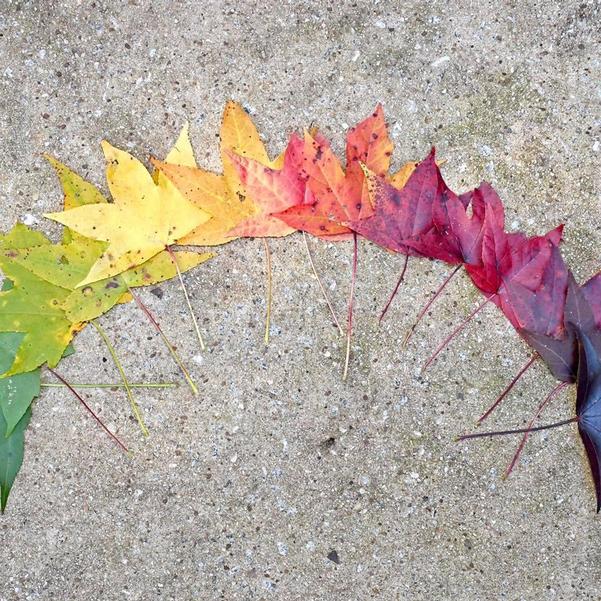
Fall Colors
This information is direct from the Southern Piedmont Natural History Field Guide.
The leaves of Sweetgum (Liquidambar styraciflua) produce an amazing range of colors each autumn. Native to the southeast, this tree is common in yards, bottomland forests, and fields. The range of colors shown here come from different pigments (and combinations of pigments) within the leaves.
The typical green of a summer leaf comes from the two forms of chlorophyll, the primary pigments of photosynthesis. The other colors are produced by various accessory pigments, most of which were in the leaf all summer but they were masked by the abundant green chlorophyll. As molecules of chlorophyll are broken down and removed from the leaf in autumn prior to leaf drop, these accessory pigments become visible.
Yellow comes from xanthophyll pigments, which are a form of carotenoid pigment. They were in the leaf all summer in minor amounts, protecting the machinery of photosynthesis from excessive sunlight exposure.
Orange often comes from carotenoid pigments such as beta carotene. They aid in photosynthesis during the summer by absorbing solar energy from wavelengths of light that are not utilized by chlorophyll. This helps the tree obtain solar energy across a broader range of light energy than if only chlorophyll is in the leaf. Orange colors can also be produced by the combination of yellow xanthophylls and red anthocyanins (see below).
Red and purple leaves are a different story. These pigments, called anthocyanins, are only produced in autumn within leaves exposed to lots of sunlight. There’s still a lot of debate as to why leaves go to the trouble of producing anthocyanin pigments shortly before they fall off the tree. It seems counterintuitive, right? I mean, why bother? Some research suggests that anthocyanins act as a natural sunscreen in the leaves. By blocking some of the incoming solar radiation, anthocyanins may help the tree efficiently extract nutrients from the leaves before they’re dropped. Other research suggests that anthocyanins help the leaves perform photosynthesis during the time period that chlorophyll is being recycled from the leaves.
Whatever the adaptive value of these new anthocyanin pigments might be, I think we can all agree that the leaves are beautiful this time of year. So head outside, take a deep breath, and enjoy all of the autumn colors while they last!
